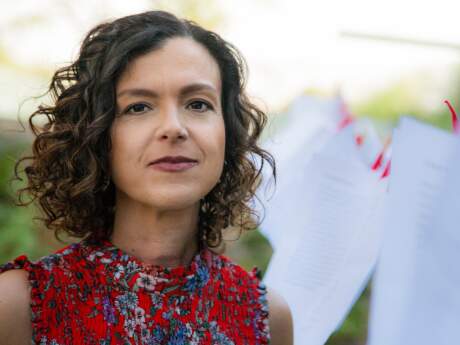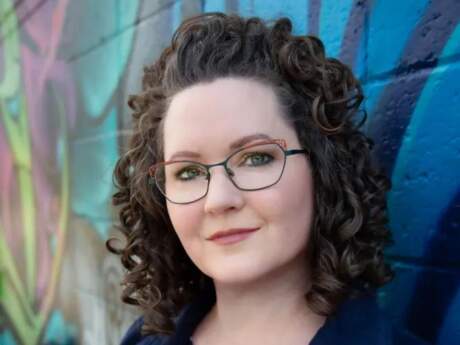In Their Own Words
Melissa Broder's “De Forest Station”

De Forest Station
She was built with forest brain
so she would learn to say
I know nothing about forests.
It is the geniusest thing
a treehead girl can say
this I know nothing.
She tried to be a DDTberry.
She tried killsyrups.
She did not think another
treehead girl would ever come
but here they are
with matching forests.
Now there are two.
A map might be made.
Come canopy you
DDTberry killsyrup treeheads.
Let's action the kind word
tongue to tree.
Let us fertilize
root and branch.
Let us make map us
and learn to say help me.
Help me help me help me
until we go fallow
clean to our unearthliness.
Let us say help me
until the cackle crows are stilled.
Help me help me help me
help me help me help me.
It is the heroist thing
a treehead girl can say
All rights reserved. Reprinted with the permission of the author.
On "De Forest Sation"
"De Forest Station" is a poem from my collection, Meat Heart, that explores learning to live somewhat peacefully in the body through the help of a map. The map is channeled by other people's voices. Once you have the map you get to keep it, but only if you share it with others.
I don't know how I came up with the words "forest brain" and "treehead" for the protagonist. They felt like the right way to describe a human being who has a mind that is constantly in motion, growing. She suffers for it. A forest is beautiful and natural, but if it's growing in your brain it can feel like weeds.
So what does a treehead do? A treehead might try to poison that sensation of weeds in the brain with DDT and killsyrups. Unfortunately, the DDT and killsyrups take out all the good stuff too. She might get the silence she wants. But she's basically dead.
So it's really a miracle when another treehead girl comes along. Our treehead girl is surprised to find that there is another person who shares her forest malady. Since there are two of them, they are able to work together—compare heads—and make a map. At this point in the poem the narrative voice switches from third person to second person, because they're a band of treeheads now. Also, I'm a treehead girl too and I wanted to be included.
The structure of the poem is nothing formal—I just broke the stanzas where I felt they should break. Each stanza has an endstop. The poet Natalie Lyalin does this often in her work, particularly in Pink and Hot Pink Habitat (Coconut), which I read shortly before I wrote this poem. I adore that book.
If you're a treehead you need your other treeheads around. When the forest gets thick you can look at them and remember the map. You can share the map and see that it works. There is that joy of maintaining a beginner's mind. For treeheads it's a necessity. Learning to say I know nothing and I need help is the whole point of everything—at least in this poem.


